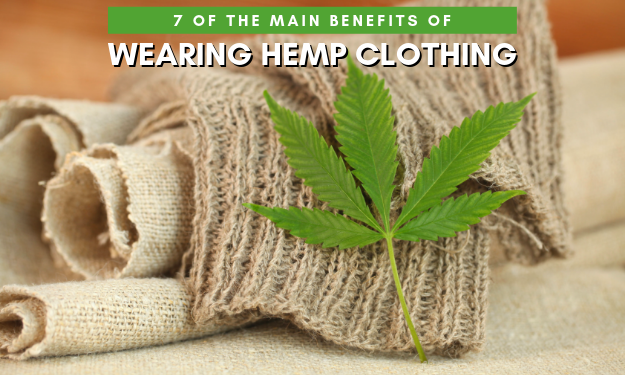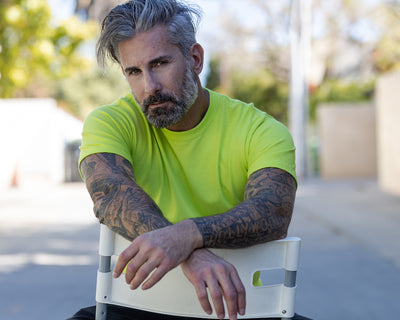New Tips For Selecting Bamboo Clothing
Wiki Article
What Are The Environmental Advantages Of Hemp Clothing That Is Low-Impact?
Low impact hemp clothing is much more eco-friendly than clothes made from synthetic fibers. Hemp clothing is environmentally friendly. Hemp grows fast and uses less water, pesticides, and herbicides than many other plants. Hemp grows well in a wide range of conditions and soil types. This helps reduce the use of chemical pesticides in agriculture.
Reduced Water UsageReduced Water Usage Hemp typically uses significantly less water than cotton, which is known for its heavy water consumption. It makes hemp a sustainable option for garment production.
Hemp is often produced without the use of synthetic pesticides. Pesticides are not needed. This reduces the environmental impact that comes with chemical farming.
Hemp is beneficial for soil health. The roots are deep and prevent compaction and erosion. Hemp leaves the soil better prepared for the future crops.
Biodegradability Hemp fibres are biodegradable, and break down as they age. They help reduce the environmental impact of textile waste. Contrary to synthetic fibers such as polyester, which may require thousands, or even hundreds of years to break down.
Reduced Carbon Footprint- Production of hemp fibers has generally less carbon footprint when compared with synthetic materials. In addition, as it develops hemp is able to absorb carbon dioxide from the air by acting as a carbon sink.
Hemp clothing's durability as well as its longevity is widely known. High-quality garments made from hemp can last several years. This means you won't need to replace them often and reduce consumption.
Hemp plants naturally resist various pests. They don't need chemical pest control.
Hemp is an incredibly versatile textile which can be utilized to make bags, clothing or other accessories.
Regenerative Agriculture: Certain sustainable farming practices can be found in hemp in regenerative agricultural systems which aim to restore ecosystems and improve the quality of their ecosystems while generating crops. This method has positive environmental effects.
It is crucial to keep in mind that while hemp may provide a variety of environmental benefits but the sustainability of clothing also depends on other factors like the process of dyeing, transportation consumption, and so on. Additionally, as with every industry, there could be variations in production practices and standards, so it's beneficial to look for certified hemp clothing that is sustainable or organic options to ensure the highest environmental benefits. Check out the top web site for hemp clothes for website info including hemp shirts wholesale, hemp apparel, hemp fabric clothing, organic hemp underwear, hemp apparel fabric, womens hemp clothing, patagonia volley shorts, hemp clothing near me, t shirt hemp, hemp shorts patagonia and more.

How Does Hemp Clothing Compare To Other Fibers In Terms Of Quality And Function?
Hemp clothing is a sustainable option that offers many functional and technical advantages over conventional fibers. Hemp clothing offers several advantages that make it a superior green and high-performance alternative.
Hemp fibers have a high capacity to wick moisture away and are air-tight, which means that hemp clothes are comfortable under any conditions. They help to wick away moisture, keeping the wearer cool and dry during the heat of summer.
Temperature Regulation
Hemp clothing has excellent thermoregulating properties. It can keep your body warm by trapping warmth close to you, and can also help you to stay cool during hot temperatures. This natural thermoregulation could reduce the frequency of clothing changes.
Durability and long-term durability-
Hemp fibres are well-known for their the durability. Hemp clothing is known to be more durable and resistant to wear and durable than some traditional fibers. The result is that hemp clothing can last for a longer time. This also means less need for frequent replacements.
UV Protection
Hemp fibers are an excellent UV protectant, shielding the skin against harmful UV radiation. This attribute is particularly useful when you are outdoors.
Biodegradability:
Hemp clothes degrade naturally over time. The environmental impact of textiles is diminished by this property, as opposed to synthetic fibers which can be buried for an extended period.
Low Environmental Impact
Hemp farming generally uses less chemical pesticides and herbicides that traditional cotton. It uses less of the precious water resource. This means it is a more sustainable choice. The eco-friendly qualities of hemp cultivation that is organic are further enhanced.
Carbon Sequestration-
Hemp is a great plant to remove CO2 from the atmospheric air. As a result, hemp cultivation can act as a carbon sink, helping to reduce greenhouse gas levels.
Sustainability and Crop Rotation-
Hemp can be included in crop rotation strategies, improving the overall health of soils and decreasing the possibility of soil depletion and the buildup of disease. This sustainable farming practice helps to reduce its environmental impact.
Versatility:
Combining hemp fibers with other natural materials like organic cotton or recycled polyester is a way to create high-performance, eco-friendly fabric blends. This flexibility allows the development of innovative and sustainable textile products.
Low Toxicity
Hemp fibers are naturally low in toxicity. They do not require any chemical processing in production, which reduces the environmental impact of production of textiles.
In addition to hemp's many practical and environmentally friendly benefits, it is important to keep in mind that the sustainability of clothing can be affected by other elements such as dyeing methods, transportation, or ethical labour practices. Consumers who want to make eco-friendly choices should choose clothing brands which use hemp or other sustainable fibres and place a high value on transparency and ethical manufacturing. Take a look at the recommended hemp clothing url for more examples including hemp bathing suit, dash hemp clothing, hemp shirts mens, hemp apparel fabric, hemp clothing, hemp pants, afends jesse dress, hemp and cotton fabric, organic hemp fabric, patagonia hemp island pants and more.

What are the differences between bamboo and hemp fibers?
Both hemp and bamboo fibers are plant-based fibres used to create textiles. Each has its own unique qualities and features. Here are some of the most significant differences between bamboo fiber and hemp fiber- 1. Plant Source-
Hemp- Hemp fibres are formed from the outer layer of the stalks. Hemp has been used to serve a variety of purposes throughout the centuries. It is a rapid-growing and adaptable plant.
Bamboo fibers- Bamboo fibers are derived by removing the woody part from the bamboo plant. Bamboo is a fast-growing species grass that is known for its rapid renewal and durability.
2. Fiber Characteristics
Hemp- Hemp fibres are known to be strong and long-lasting. They are among the most durable natural fibers that soften with each wash, making them suitable for durable textiles.
Bamboo bamboo is a soft, silky fiber. The fibers are less strong than hemp, but they are also more delicate. But they are extremely sought-after for their comfort when placed on the skin.
3. Texture and Feel-
Hemp- Hemp fabrics have an abrasive, textured feeling when they are in the natural state. While it can be an extremely comfortable fabric, its texture is different from bamboo.
Bamboo fabric is silky smooth and extremely soft. It is described as having a soft, cottony feel. It is extremely cozy.
4. The ability to breathe and the moisture-wicking properties-
Hemp- Hemp fibres are naturally breathable, moisture-wicking and allow air circulation. They absorb moisture and enable air circulation. They are able to keep you cool and dry during hot weather.
Bamboo fibers are also extremely air-tight. They can wick moisture away. Micro-gaps in the fabric enhance the ability of bamboo to regulate humidity and temperature and allow you to remain comfortable under varying conditions.
5. Environmental Impact-
Hemp- Hemp is considered as an eco-friendly fibre due to its low water consumption, fast growth, and resistance to pests, which reduces the need for pesticides and herbicides. It is also able to absorb carbon dioxide out of the air as it grows.
Bamboo- Bamboo is known for its long-lasting nature. It is extremely durable, is fast growing and needs only a tiny amount of water. Certain bamboo species like Moso Bamboo, are thought to be highly sustainable.
6. Processing-
Hemp- Hemp requires extensive processing to separate its outer bast fibers (outer woody core) from the woody inner fibers. The process may require Retting (decortication), mechanical separation, or retting.
Bamboo The bamboo fibers are extracted using a chemical known as the viscose or rayon process. The process involves breaking down bamboo pulp. Some bamboo textiles however, utilize closed loop processes to reduce chemical waste.
7. Versatility-
Hemp- Hemp fibers are flexible and can be utilized in a variety of uses, such as clothes, textiles, paper, building materials, and more.
Bamboo- Bamboo fibres are used predominantly in clothing and textiles however, they can be found in other products such as towels and bedding.
Both hemp and bamboo have distinct characteristics and provide sustainability benefits. Your choice depends on your preference for the environment, and also what you're looking for regarding specific characteristics and properties. Read the best great site about bamboo clothing for more info including bamboo brand jeans, mens bamboo boxer shorts, faceplant pajamas, bamboo terry fabric, bamboo jacket, bamboo undergarments, lisa frank bamboo pajamas, cotton bamboo pajamas, ladies bamboo pants, bamboo newborn clothes and more.
